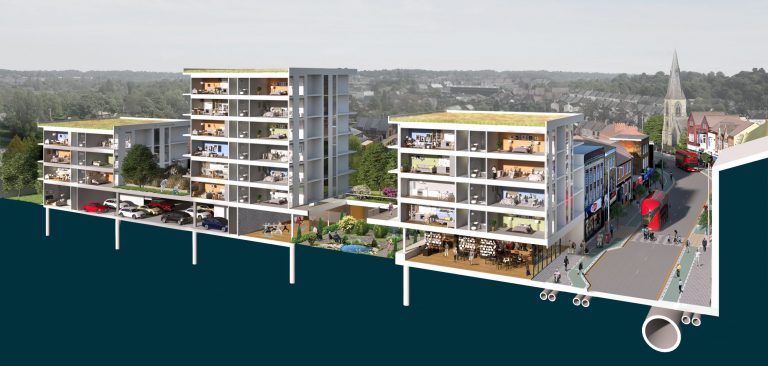By mixing it up, we can bring people back to the high street
Despite the regular doom and gloom that the high street faces, there is an undoubtable future for retail in town centres up and down the UK, says Rory O’Hagan for Architecture Magazine. This future has not yet been realised, despite the raft of proposals we have seen in recent months from government and industry.
To do so, we need to approach the built environment differently, actively mixing things up, bringing complementary uses together and using the existing infrastructure of town centres to help bring people and place together once more.
To secure its own future, the high street must interpret what that future may hold. Recent trends have offered a snapshot of this, showcasing a future for retail that is digitally-enabled, multi-channel and deeply experiential. The current status quo in the bricks and mortar retail offering is a long way off from being able to support this future, with retail figures adding insult to injury.

Reimagining and reinventing these places requires two crucial actions: to consolidate and to complement. Consolidation of traditional retail space is an inevitable reality under current market trends, with e-commerce and reduced consumer spending eating away at the need for larger floor plans.
Bringing complementary uses onto the high street, however, requires a long-term strategy and architectural ingenuity. The Grimsey Review 2 of 2018 couldn’t have been clearer, stating that “there is a need for all towns to develop plans that are business-like and focused on transforming the place into a complete community hub incorporating health, housing, arts, education, entertainment, leisure, office space, as well as some shops, while developing a unique selling proposition (USP).”
And this is where architecture comes in: to successfully combine future retail uses with other tenures to create vibrant, active and community-centric hubs.

City centres need to be designed flexibly to respond to changing trends, with not only a mix of tenures, but a mix of use classes and spaces that can seamlessly adapt to the evolving needs of the community. Where we have seen this in full effect, is through the use of ‘meanwhile spaces’, which offer temporary contracts, at reduced prices, to a range of local businesses and pop-up initiatives to create a sense of place and drive footfall.
To achieve this, we need stronger leadership from local authorities and town centre managers to encourage a planning system that supports the flexibility that successful mixed-use development demands. And designers need to showcase versatile, flexible design that can be molded according to the communities’ needs.
With ever-expanding asset classes such as later living, co-living, purpose-built student accommodation and family rental housing, there is a substantial offering of residential options that are well suited to our town centres with all its transport links and surrounding social infrastructure.
Ultimately, introducing housing to our town centres will drive footfall back to areas than once buzzed with activity, providing space for local businesses and high-quality residential homes to support a consolidated, modern retail offering. Mixed-use schemes are the only way that our high streets can become the thriving community hubs they once were. Whatever the future might hold for the high street, we have to mix it up to ensure its survival.